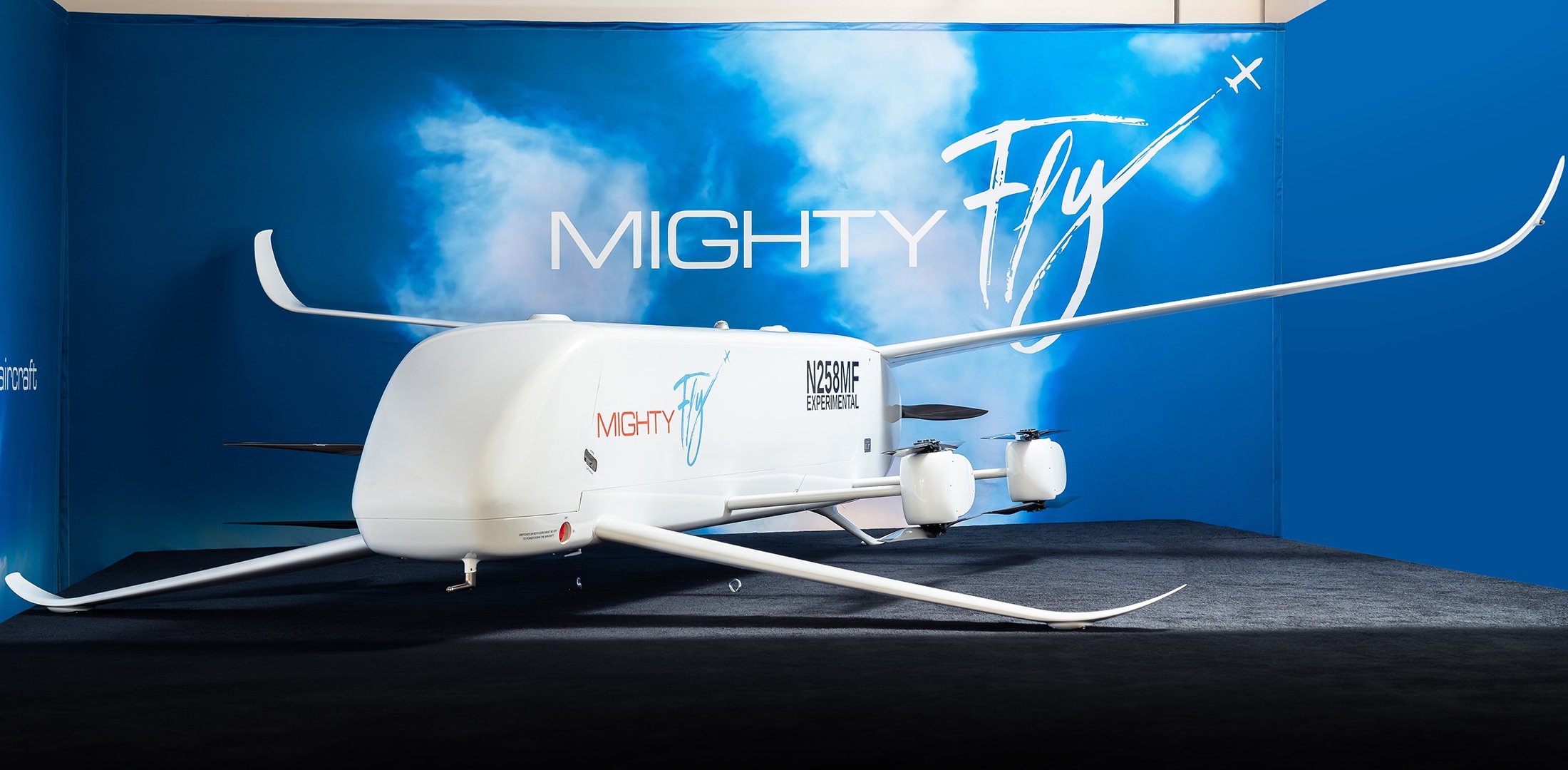Click Here to View This Page on Production Frontend
Click Here to Export Node Content
Click Here to View Printer-Friendly Version (Raw Backend)
Note: front-end display has links to styled print versions.
Content Node ID: 420298
MightyFly has rolled out its latest rendition of its Cento aircraft, a hybrid eVTOL freighter designed to carry 100-pound payloads up to 600 miles. The company unveiled the third-generation Cento prototype on January 25 during a special event at its San Leandro, California headquarters. Earlier that day, the FAA granted MightyFly a special airworthiness certificate and a certificate of authorization permitting it to fly the experimental aircraft between the San Francisco Bay-area Byron and New Jerusalem airports.
While the third-generation Cento prototype has similar specifications as the second-generation version MightyFly revealed one year ago, it has some pretty significant differences, most notably in the airframe. The earlier prototype featured a fixed-wing configuration with a V-tail, while the updated version uses a tandem-wing design with landing gear built into the canard.
It still has a pusher propeller in the rear and eight vertical lift fans mounted to the sides, but the configuration of the vertical lift fans has changed. On the second-generation Cento, the propellers were lined up on two booms running parallel to the fuselage. Now they’re mounted in pairs on four separate booms that extend outward from the fuselage.
MightyFly said the upgraded design improves operational efficiency while giving the aircraft the ability to accommodate for greater variation in its center of gravity. Depending on the contents and loading order of cargo items, the aircraft’s center of gravity can vary quite a bit, and the new Cento configuration allows for more wiggle room when balancing the payload.
The new Cento also features an enlarged cargo bay made with a lightweight composite structure. This provides more room for larger packages, including coolers used to transport human organs for transplants.
“The vehicle you see today is a testimony of MightyFly’s talent, creativity, innovation, and decades of industry expertise. This technology will help save lives and solve painful logistics needs of businesses around the globe,” said Tim Draper, one of MightyFly’s investors.
MightyFly is developing the Cento, as well as a larger variant with a 500-pound payload capacity, to enable same-day, door-to-door delivery services without the need for costly ground infrastructure and personnel. To make operations more efficient, it has integrated what it calls an autonomous load mastering system (ALMS), which enables the aircraft to load and unload cargo autonomously with no human intervention. The ALMS automatically opens and closes the cargo hatch and uses an internal positioning system to secure packages inside while ensuring the load remains balanced.
Following a flight test campaign with the third-generation Cento prototype, MightyFly aims to publicly debut its autonomous cargo delivery system in the fall of 2024 with a series of demonstration flights in Michigan. It is also working under contract with the U.S. Air Force to explore defense applications for the large cargo drones.
